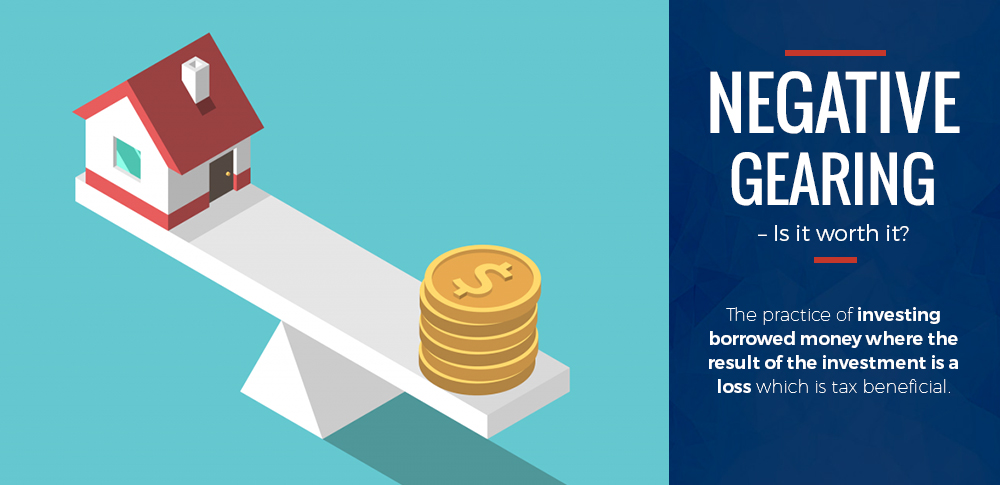
01 Aug Negative gearing explained: what it could mean for you
We explain what negative gearing is, how it works and what it could mean for you as a property investor.
Negative gearing is a strategy employed by many property investors. So what exactly is it and how do you decide whether it’s right for you?
The Australian Securities and Investment Commission website says “negative gearing is where you borrow money to invest and the income from the investment is less than the expenses”.
Why would you want to do that? Well, Head of Advice at Pivot Wealth, Ray Jaramis, says the easiest way to understand is to consider the following scenario.
“Let’s assume you purchase an investment property worth $500,000. You rent it out for $15,000 a year but the interest on the loan costs you $20,000,” explains the Independent Financial Advisers’ 2018 Young Adviser of the Year.
Why would you forgo $5,000 in cash flow each year? Because doing so brings down your taxable income, adds Jaramis.
“If I start with a $100,000 salary, earn $15,000 in rent, but then lose $20,000 in interest, my net (taxable) income drops to $95,000,” Jaramis says.
“My employer has been deducting Pay As You Go (PAYG) tax instalments on my $100,000 salary, but at the end of the year I’ve only earned $95,000, so the tax man owes me.”
Interest isn’t the only revenue deduction you can claim on your income, Jaramis adds.
You can also claim deductions for depreciation, maintenance expenses, agent fees, advertising fees and insurance.
Capital gain
That’s how negative gearing works from a tax minimisation perspective. From an investment perspective, the idea is that short-term cash flow pain will be offset by long-term capital gains.
That is – if you’re able to sell the property for more than the purchase price and costs, you’ll be ahead financially in the long-term.
“Under the scenario I’ve discussed, my $500,000 property needs to grow in value by more than $5,000 that year to put me in a better financial position,” explains Jaramis.
Beware
While the lure of tax deductions and capital gain may be strong, Jaramis warns: “If you need the tax win to make an investment work, then I’d be rethinking the investment”.
“Firstly, you do physically need to find the cash every single month, or every single year, to make up for the expenses you’re claiming as deductions,” he says.
“I ran through negative gearing with a client the other day and she was amazed at how much pressure it would put on her week-to-week or month-to-month cash flow.”
And any future increases in interest rates could exert additional pressure.
“You may adopt a negative gearing strategy and be happy to pay the extra $1000 a month now. But if interest rates go up, that $1000 increases, which can pinch even more,” Jaramis warns.
Deciding what’s right for you
As you can see, while negative gearing is a viable strategy for some property investors, there are lots of factors to consider.
Developing a strategy to achieve your unique financial goals, and protect your family, can take expert planning.
If you would like to speak to a financial adviser about your options, find an adviser here.


No Comments